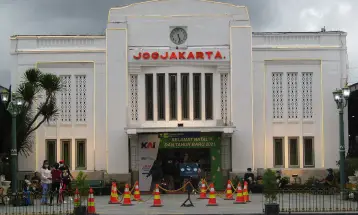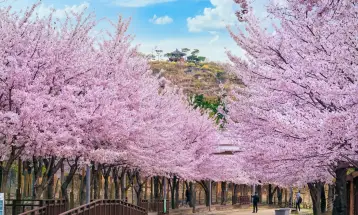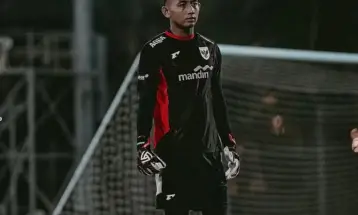Get to know Sundanese Traditional Musical Swelling

Holiday Ayo - West Java has traditional Sundanese music with Islamic nuances which is still sustainable. Known as Gembyung art. Its distribution area includes Cirebon Regency and City, Kuningan Regency, Majalengka Regency, Subang Regency, Sumedang Regency, Ciamis Regency, Tasikmalaya Regency, and Garut Regency.
Gembyung comes from two syllables, namely 'gem' and 'byung'. It means, 'gem' is "ageman" which means teachings, guidelines, or understandings embraced by humans, and 'byung' means "kabiruyungan" which means certainty to be implemented. So that this art has exemplary values to be used as a way of life.
This traditional music art first developed during the spread of Islam. At that time, gembyung was played by santri who were guided by pesantren elders using the main waditra (musical instrument), namely flying (a type of tambourine) as an accompaniment to a song with sacred nuances.
The complete art performance consists of waditra, pangrawit (musical instrument player), interpreter kawih (vocals), dancers, and clothing. Now in several areas in West Java, this art varies. Such variations of waditra can be seen from the addition of musical instruments, including trumpet, kecrek, drums, and goong.
In terms of song titles, they also vary, Art Gembyung Cirebon and Tasikmalaya mostly use Arabic song titles, such as Assalamualaikum, Barpromise, Yar Bismillah, Salawat Nabi, and Salawat Badr. While in Subang and Sumedang, many take the title of the song in regional (Sundanese) language, such as Raja Sirai, Siuh, Rincik Manik, Éngko, Benjang, Malong and Geboy.
Then the number of Pangrawit varies and is adjusted to the number of musical instruments used. Likewise with dancers, in some areas such as Cirebon the art of tarling has been influenced. Meanwhile, in other areas, the Jaipongan dance, tap tilu, and so on are affected.
Another variation can be seen in the clothes worn by the players. In Cirebon and Tasikmalaya, they wear clothing that is usually worn for prayer, such as a kopeah (cap), a kampret shirt or white shirt, and a sarong. In contrast to Subang, Sumedang, Ciamis, and Garut who wear traditional Sundanese clothing, namely iket, kampret, and pangsi pants.
In the show, there is an interpreter kawih Gembyung who is usually a man while playing a tambourine. Usually held during Islamic holidays, celebrations, circumcisions, weddings, ruwatans, the need for overtime, and ngabeungkat (ceremonies to pick up the water of life).
In some areas, gembyung art is a must in the implementation of traditional ceremonies. For example, in Ragasuta Village, Cibitung Village, Ciater District, Subang Regency. There is trust. If a wedding ceremony does not hold a Gembyung performance, it will be unfavorable for the bride and groom.








Leave a comment